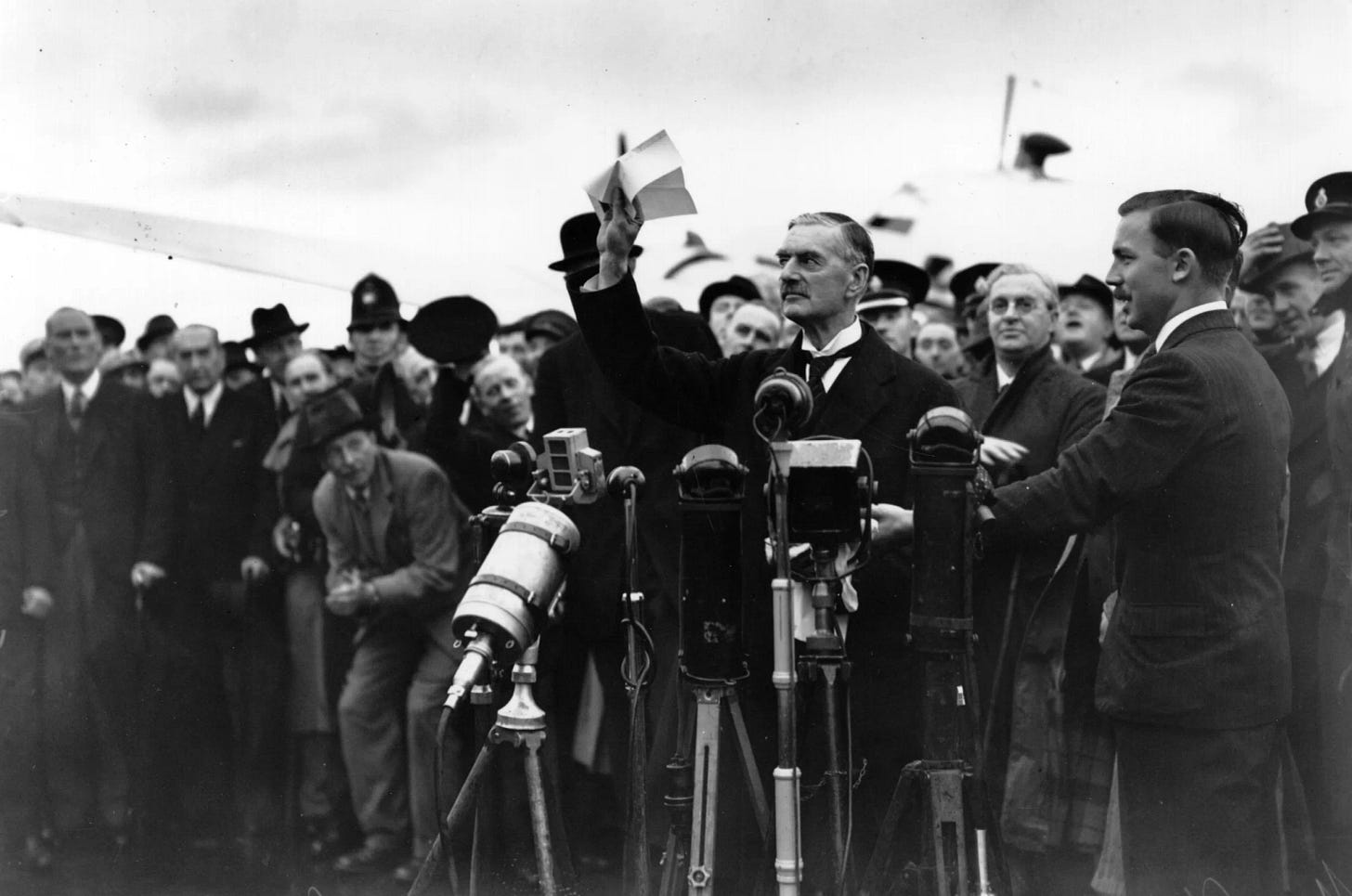Bonus 165: The Appeasement Thesis
One defense of the Court's behavior on Trump-related emergency applications is that the justices are picking their battles. If so, the question becomes which battles they actually intend to fight.
Welcome back to the weekly bonus content for “One First.” Although Monday’s regular newsletter will remain free for as long as I’m able to do this, I put much of the weekly bonus issue behind a paywall as an added incentive for those who are willing and able to support the work that goes into putting this newsletter together every week. I’m grateful to those of you who are already paid subscribers, and I hope that those of you who aren’t will consider a paid subscription if and when your circumstances permit.
I wanted to use this week’s bonus issue to reflect upon a narrative I’ve now seen in multiple places attempting to defend (or at least describe) the Supreme Court’s behavior on Trump-related emergency applications. Most recently, on Tuesday, the justices granted the 16th-straight request for emergency relief from the Justice Department—this time, to clear the way for agency-by-agency planning for mass reductions in force. Only Justice Jackson publicly dissented.
The defense, perhaps best articulated by University of Chicago law professor Will Baude in a written exchange with me and University of Pennsylvania law professor Kate Shaw in the New York Times, is that the justices in the majority in all of these cases, especially the Roberts/Kavanaugh/Barrett trio, are picking their battles—that they are wary of the Court’s ability to withstand repeated confrontations with President Trump, and so are using (mostly) unexplained grants of emergency relief as a way of lowering the interbranch temperature. On this theory, by letting the President carry on with much of what he is doing without (in most cases) committing to substantive endorsements of the executive branch’s behavior, the justices preserve their capital to repudiate the actions on the merits if and when they have no choice but to rule up or down on their substantive validity.
In essence, this a thesis of appeasement—that the Court is letting the President win these “small” fights in the hope that it will either moot the need for big fights down the road or, at the very least, arm the Court with a larger reservoir of goodwill and capital to spend when those big fights come. Indeed, one can find examples throughout the Court’s history of similar behavior—where, faced with a case presenting a choice between two equally unattractive institutional outcomes, the justices simply punted. (Ex parte McCardle is an especially revealing case in point.) Like Joshua says to Matthew Broderick’s character in WarGames about Tic-Tac-Toe (and “Global Thermonuclear War”), sometimes, the only winning move is “not to play.”
As I explain below the fold, even if this descriptive account of at least some of the justices’ behavior is correct, I see three different—but related—problems with the Court taking such an approach in these cases. First, these aren’t one-off disputes; they’re a flood of cases. As opposed to letting the President or Congress get away with one maneuver in one case, the net effect of the Court’s 16 interventions in favor of Trump to date has been to greenlight a truly unprecedented amount of lawlessness by the executive branch. Second, and as a result, the Court’s interventions are causing an enormous amount of real-world harm—whether with respect to over a million individuals losing their previous immigration status; countless migrants being removed to third countries; federal employees being fired; grants being cancelled; or otherwise.
Third, and most importantly, whereas the Court’s appeasement in prior episodes helped to defuse constitutional crises, the behavior here only enables continued bad behavior by the executive branch—both at the policy level and with regard to defying adverse lower-court rulings. Appeasement may well be a viable strategy when the party being appeased is willing to take the win and stand down. It is a potentially catastrophic approach, however, when the next step after being given control of the Sudetenland is to seize all of Czechoslovakia. One way or the other, the justices are eventually going to have to draw a line in the sand. The question is not just where that red line actually is, but how much of an ability the Court will still have to act if and when it tries to draw it.
For those who are not paid subscribers, we’ll be back Monday (if not sooner) with our regular coverage of the Court. For those who are, please read on.



